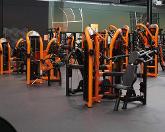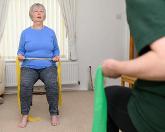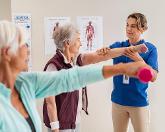see all jobs
Are health clubs doing enough to appeal beyond the middle classes?
Research conducted by Dr Paul Bedford has revealed that a large proportion of health club memberships are dominated by the middle classes, with eight socioeconomic groups significantly under-represented.
The research, published last year, has spurred discussion as to whether the health club membership demographic does lean too far towards those with a higher income, or whether other demographics are choosing different offerings as an alternative.
One school of thought suggests that an increasing amount of public providers have upped their level of service, meaning more gym-goers now use public facilities as opposed to membership-driven clubs.
The lack of membership from those on lower incomes may also be driven by their interaction with the health sector, with a number of people choosing a more casual approach, resulting in those with lesser incomes not partaking in a membership-led lifestyle and paying for services only when they can afford to.
“I have the utmost respect for this research, but I do have to question whether it paints a full picture,” says Kevin Yates, Head of Leisure at Leisure Connection.
“As a public access provider, it’s our job to target hard to reach groups including children, older people, disabled people and those on low incomes, whose participation often won’t be reflected in our membership numbers.
“For example, at one of our leisure centres we have 3,000 direct debit members, but a total of 11,000 users on the database and 750,000 visits a year.”
Despite these arguments the question is still being asked: are health clubs doing enough to engage with the wider population?
“I’m surprised at this research, because I think health club membership has become less middle class,” says John Treharne, CEO at The Gym Group.
“In the 80s and much of the 90s, a health club membership was expensive and therefore a middle class badge: health clubs were associated with the nouveau riche.
“In my view, that has changed dramatically over the last five years. In the UK, Europe and the US, there has been a cultural change which has made health club membership less middle class.”
In support of such a change, other experts have stated that they are making significant movements to make leisure facilities more attractive for those on lower incomes.
“Cost has proved to be one of the biggest barriers to attracting the lower socioeconomic groups, so since 2009 we’ve been offering Birmingham residents free access to our leisure centres at set hours during the day,” adds Karen Creavin, Head of community support & healthy lifestyles at Birmingham City Council.”
For those who do not agree that health clubs are attracting groups at the lower end of the socioeconomic scale, some suggest there is still scope to enable them to do so, though work still needs to be done.
“Since April 2013 - when local authorities were charged with public health provision - there’s more funding available to target this population than ever before, and more onus on local authorities to find preventative measures to combat the rising tide of chronic illness in communities,” says Julian Berriman of Premier Training.
“To attract those in need, provision needs to be more accessible and appealing: currently there’s a lack of community emphasis. Clubs need to start interacting with the communities they sit within and taking activities to where people already go.”
A discussion of the class debate is available to view in the latest edition of Health Club Management magazine, pp.32-33.
- News by sector (all)
- All news
- Fitness
- Personal trainer
- Sport
- Spa
- Swimming
- Hospitality
- Entertainment & Gaming
- Commercial Leisure
- Property
- Architecture
- Design
- Tourism
- Travel
- Attractions
- Theme & Water Parks
- Arts & Culture
- Heritage & Museums
- Parks & Countryside
- Sales & Marketing
- Public Sector
- Training
- People
- Executive
- Apprenticeships
- Suppliers





























